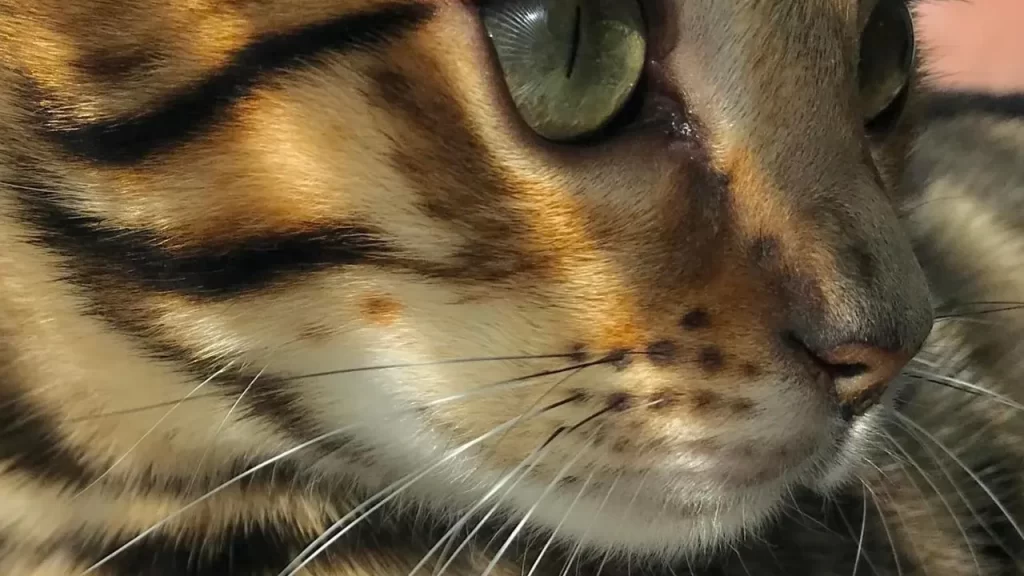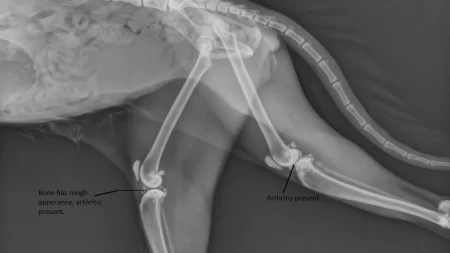There are several reasons for your cat’s whiskers turning black. One reason could be aging, as cats’ whiskers can change color as they get older.
Another possibility is a medical condition like hyperthyroidism or diabetes, which can cause pigmentation changes, including in the whiskers.
Additionally, dirty whiskers can turn black if your cat is a messy eater or enjoys playing in the dirt.
If you’re concerned about your cat’s whiskers, it’s best to consult your veterinarian.
They can help rule out any medical issues and provide guidance on maintaining your cat’s whiskers for optimal health and appearance.
Here’s some additional information about cat whiskers:
- Whiskers are found on a cat’s face, cheeks, chin, and legs.
- Made of keratin, the same material as human hair and nails.
- Whiskers are highly sensitive and aid cats in detecting movement and environmental changes.
- They also assist cats in maintaining balance.
- Trimming or damaging whiskers can hinder a cat’s navigation and even cause anxiety.
- Keeping the whiskers clean and free from dirt and debris is important.
- You can gently brush your cat’s whiskers using a soft-bristled brush or wipe them with a damp cloth.
- If your cat’s whiskers are turning black, it’s crucial to consult your veterinarian to rule out any underlying medical conditions.
Is it normal for my cat’s whiskers to turn black?
Whether a change in the color of a whisker is normal or not depends on its underlying cause. Changes caused by aging, genetics, or sun exposure are typically harmless.
However, changes resulting from stress, injury, poor nutrition, or infection may indicate an underlying health issue.
It is important to keep an eye on your cat’s whiskers and overall health and seek veterinary advice if necessary.
What should I do if my cat’s whiskers are trimmed or damaged?
If your cat’s whiskers are trimmed or damaged, it is important to take steps to help them feel more comfortable.
Here are a few things you can do:
- Provide a safe and familiar environment. Make sure your cat has a place to hide and feel safe. You can also try putting a blanket or towel over their bed or crate.
- Avoid sudden movements. Cats use their whiskers to sense movement, so sudden movements can startle them. Be mindful of your movements around your cat and try to be as gentle as possible.
- Offer your cat a soft place to rest. A soft bed or blanket can help your cat feel more comfortable and secure.
- Monitor your cat’s behavior. If your cat seems anxious or stressed, you may want to take them to the veterinarian to rule out any medical causes.
It is important to remember that whiskers are very important to cats. They use their whiskers to sense their surroundings and to help them maintain their balance.
If a cat’s whiskers are trimmed or damaged, it can make it difficult for them to navigate their environment and can even lead to anxiety.
With a little care and attention, you can help your cat feel more comfortable and safe after their whiskers have been trimmed or damaged.
What are some things I can do to prevent my cat’s whiskers from turning black?
To prevent your cat’s whiskers from darkening:
- Never trim or cut the whiskers of your cat. This might harm them and induce a darker regrowth.
- Shield your cat from the sun’s rays. Sun exposure might bleach whiskers, making them susceptible to darkening.
- Confine your cat indoors or ensure close watch when they venture outside to avert possible conflicts or mishaps that could harm their whiskers.
- Avoid fleas, ticks, or mites on your cat. These creatures may invade their whiskers, leading to curling and darkening.
- Address any health issues that might impact your cat’s whiskers, such as diabetes, the feline leukemia virus, or allergies.







